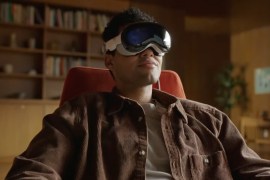Microsoft’s HoloLens headset only lasts a few hours on a full charge
And you thought smartwatch battery life was bad

HoloLens, Microsoft’s upcoming augmented reality headset, is one of the coolest things we’ve seen over the last year, although caveats have emerged: in particular, early users say the field of vision is extremely limited.
So too is its lifespan, it seems, if a Microsoft technical evangelist is to be believed. Bruce Harris, who serves in that role for the company, gave a presentation in Tel Aviv on the headset, and claimed that the fully wireless headset may last upwards of 5.5 hours under average use.
However, when running higher-end, more taxing applications, that tally could drop as low as 2.5 hours. Headsets like the Oculus Rift and HTC Vive are plugged into a computer for power, but the untethered, self-contained HoloLens is its own, battery-powered computer. And it sounds like you’ll be lucky to get a few hours out of a charge.
Contrast that to something like Google Glass, which was much simpler in application but was rated to last an average waking day. That wasn’t always the case in actual use, but it was a fair ballpark. HoloLens doesn’t even come close.
It’s likely that most people will use HoloLens in dedicated sessions for certain tasks and needs, rather than wearing it all day long like Glass, but will you be stuck waiting if the battery dies by noon? Can you continue using HoloLens while plugged in (which admittedly sounds like a terrible idea)? These questions remain.
But there’s hope: HoloLens is still very early. Microsoft is trying to win over developers right now, but it could be years before the headset it available to the wider public. In that time, battery life will improve and the field of view should get larger too, claims Harris. His presentation also notes that HoloLens headsets can link up to view the same content simultaneously, which sounds like another very useful addition.
Is a full day of battery life feasible with HoloLens? Perhaps not without significant extra bulk – or a dramatic enhancement in battery tech. But a solid workday’s worth of hours seems like a smart goal to target. For now, Microsoft doesn’t seem too keen on sharing this info, as the YouTube video of the presentation has been pulled – but it has been mirrored elsewhere, as seen above.
[Source: The Verge]



